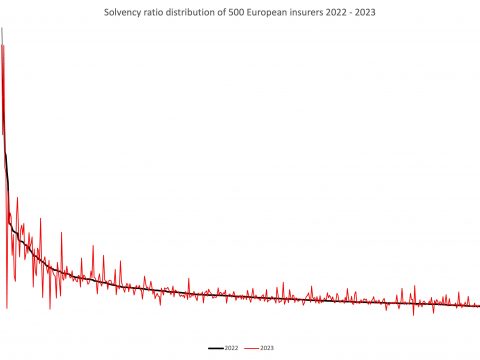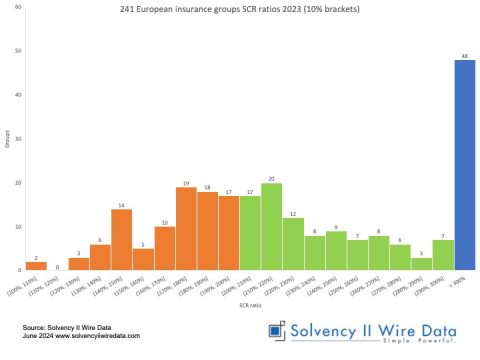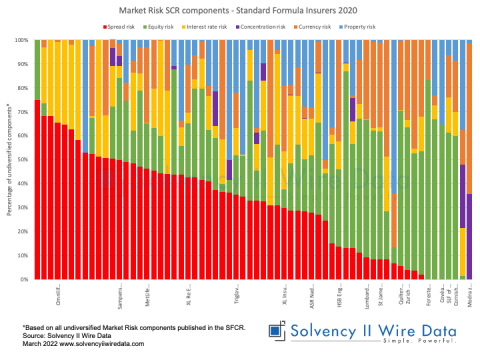
It is said that the ORSA, the Own Risk and Solvency Assessment, is at the heart of Solvency II. Justin Wray, head of policy, EIOPA, argues that the ORSA can, and should, be an effective tool at the core of insurers’ climate risk management strategy.
Net zero targets in a 100-year perspective

The detrimental impact of global warming on natural and human systems is already visible. Without further international climate action the rise in global average temperature and associated physical risks will continue, raising the underwriting risk of undertakings, impacting asset values and challenging their business strategies.
To put the challenge we face as a society into perspective consider, for example, the requirement of the Paris Agreement on climate change for its signatories to reduce greenhouse gas emissions to well below 2°C and to pursue efforts to limit it to 1.5°C relative to pre-industrial levels.
Keeping the global temperature increase below 2°C would require annual reductions in carbon emissions greater than those that occurred in any single year in the last 100 years –including during the deepest recessions; and for close to 80% of proven fossil fuel reserves to be stranded. Hence, the transition towards a zero-carbon economy, especially when unanticipated, may seriously depress investments in carbon-intensive sectors.
The insurance climate risk
The insurance industry will be impacted by climate change from different angles. Besides the expected increase in frequency and severity of claims of physical risk, transition risk may induce higher legal claims on companies that fail to take into account the impact on climate change, which may affect undertakings directly or indirectly through their underwriting of legal liability risks.
Financial markets may also reassess their expectations of a future transition to a low-carbon economy, resulting in price falls of carbon-intensive assets in the present.
Climate scenarios (not) in the ORSA
Despite these considerable risks, recent EIOPA analysis shows that only a small minority of undertakings assess climate change risk using scenario analysis in their ORSA. Moreover, where undertakings perform a quantitative analysis of climate change risk, most assessments only take a short-term perspective.

Given the abovementioned impacts, EIOPA believes it is important to encourage a forward-looking management of these risks, both in the short and long term.
In April 2021 EIOPA issued an opinion setting expectations on the supervision of the integration of climate change risk scenarios by insurers in their ORSA.
To provide optional guidance for materiality assessment in the context of climate change, climate change scenario design and specifications using concrete case studies, EIOPA published a follow up application guidance in August 2022. The application guidance should also contribute to lowering implementation costs for insurance undertakings, in particular small- and mid-sized entities.
ORSA climate scenario expectations
Insurers are expected to assess climate change risk in the ORSA both in the short and in the long term, covering both transition and physical risks through a materiality assessment and, when relevant, a scenario analysis.
First, insurers will have to run an exposure analysis in order to identify the existence of a material risk through a combination of qualitative and quantitative analyses. When a material risk is identified, a mild (less than 2°C) and a severe (more than two 2°C) climate change scenarios are expected.
Risks are considered to be material in the context of Solvency II where ignoring the risk could influence the decision-making or the judgement of the users of the information, which in case of the ORSA would be the undertaking’s administrative, management or supervisory body and its relevant staff.
Making progress in a challenging new environment
The analysis of climate change risk is a relatively new field, in particular in relation to the financial sector, including insurance. The insurance industry, as well as supervisory authorities, started only recently, to explore the effects of climate change. EIOPA’s application guidance presents several methodologies in order to promote a diversity of approaches and flexibility in the model choice and calibration.
Though challenges remain, considerable progress has been made in enhancing understanding and developing approaches to measure exposures to climate change risk.
EIOPA considers the ORSA to be an appropriate tool to account for climate change risks as it expects that the results of the scenario analysis will be used to steer management decisions and the overall strategy of the insurer.

—
The author is head of policy at EIOPA, the European Insurance and Occupational Pensions Authority. The views expressed are the author’s own.
Justin Wray participated in an expert panel discussion on insurance climate disclosures. Insurance Climate Disclosures – present state and future outlook, is a collaboration between Solvency II Wire, Royal London Asset Management and Slaughter and May, bringing together senior regulators and industry figures to discuss the challenges of ESG reporting in the insurance industry.
Insurance Climate Disclosures: present state and future outlook, was held at the offices of Slaughter and May in London, on 14 June 2022.
Articles in the series
- Insurance Climate Disclosures: present state and future outlook, an introduction
- Climate-related risks – a coordinated response to a global challenge, FSB
- Climate change scenario analysis in the ORSA – a key tool for (re)insurers, EIOPA
- Better not more ESG information, FRC
- Managing climate policy uncertainty, Just Group
- Climate and sustainability data quality – an insurance perspective, Marsh
- Shining a light on the Path to Sustainability, RLAM
- Position paper: Conflicts of climate disclosure
- Media Release: Insurance Climate Disclosures – present state and future outlook
Get the next article directly to your inbox, sign up to the Solvency II Wire mailing list.








